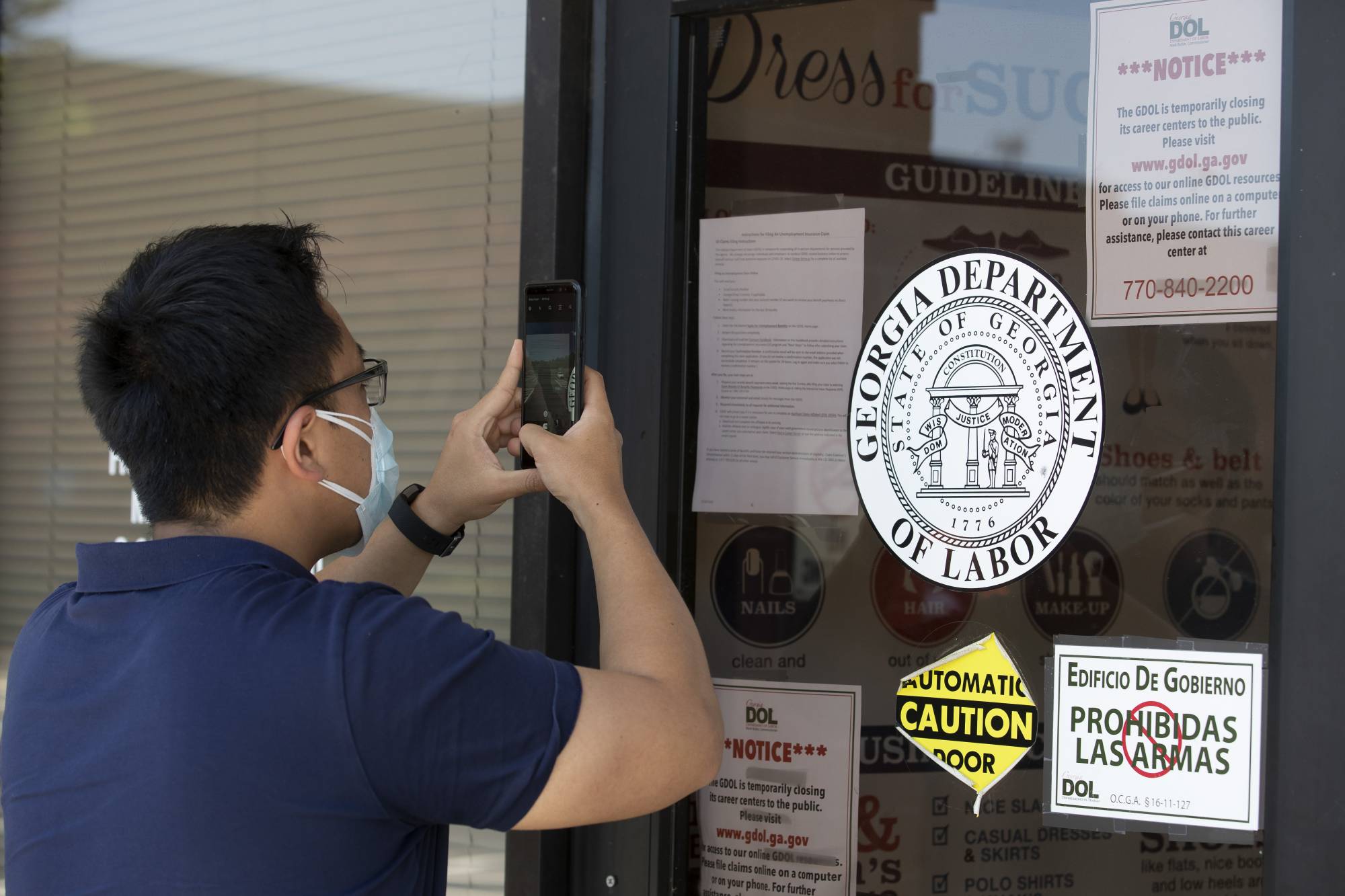Labor Dept backs state-by-state refresh of UI benefits systems rocked by pandemic
The Labor Department is embarking on a state-by-state refresh of unemployment insurance (UI) systems pushed to their limits at the height of the pandemic.
The Labor Department is embarking on a state-by-state refresh of unemployment insurance (UI) systems pushed to their limits at the height of the COVID-19 pandemic.
The department is awarding grants to help states modernize the legacy IT systems that deliver unemployment insurance benefits.
Acting Labor Secretary Julie Su told reporters Tuesday that a nearly 3,000% surge in UI claims in 2020 demonstrated how these legacy IT systems were “inadequate to meet the needs of people who were suddenly out of work.”
The department first awarded UI modernization grants to states in 2021. It’s now funding projects in 18 other states, at a time when their systems are experiencing historically low levels of strain.
Su compared the state-by-state modernization project to repairing a leaky roof.
“It really should be fixed. But during good times when there’s sunshine, you can get away with patching it. Then, when the storm hits, the problem of neglected repairs and postponed changes becomes clear … but you can’t replace a damaged roof in the middle of a storm,” she said.
The U.S. is currently seeing the lowest level of unemployment for the longest stretch since the 1960s.
“Now is the time between storms to fix the roof, when the unemployment rate is at historic lows,” Su said.
The pandemic also exposed the tremendous cost of outdated technology and decades of underinvestment from Congress.
“State UI teams had been cut to the bone,” Su said, adding that a lack of a coordinated federal response to implement left UI systems vulnerable to fraud.
“Every state was left to battle fraud by themselves. It just didn’t work. There were no compensating controls, there was no coordinated response. And so how we’re working at a national level, with multiple states, to try to make sure that we have proper guards against fraud,” Su said.
However, the states’ UI systems at the height of the pandemic injected up to $2 of economic stimulus over every dollar that went into their budgets.
“For all the stories of fraud and delays, this is an important fact that has been forgotten,” she said.
The Labor Department plans to keep modernizing UI systems on a state-by-state basis.
“We recognize that there isn’t a one-size-fits-all solution here …. Our vision is not to wholesale replace entire systems, which could require shutting down the system to do that, which obviously, we cannot do … It’s to really take a modular and agile approach to IT modernization and to focus first on those public facing parts that have the most impact,” Su said.
The department, however, will help give states access to shared tools to tackle nationwide challenges, such as fraud detection and identity verification.
“States can take pieces — it’s almost like a Lego, if you imagine it as pieces that fit together, but can also be changed in order to build the system that’s needed in particular states. So we don’t imagine one uniform system, but our goal has also been to provide tools and a network of sharing, so that certain things that should be done nationally, there are tools for that too,” she said.
DOL recently released a comprehensive transformation plan for UI system modernization called “building resilience.” The department is also requesting funds for the project in its fiscal 2025 budget request.
“Truly, this is a 53-state system. Each state sometimes also has their own rules, but the implementation of UI is on a state-by-state basis. So the plan is not to develop something that is uniform in each state, but it is to have shared learning, shared lessons,” Su said.
DOL selected New Jersey as one of two states that the department chose to lead the way in this national effort. The state received about $25 million to overhaul its UI program.
NJ recently launched an online UI pilot and is having users test the system to ensure it provides a higher level of customer service.
“We couldn’t have done this on our own. And the feds probably couldn’t have done it on their own,” New Jersey Governor Phil Murphy said. “The fact of the matter is, the partnership was the magic here.”
New Jersey’s Chief Innovation Officer Dave Cole said the new application has been tested with the volumes the state saw at the peak of the pandemic.
“That gives us confidence that the new application is ready to withstand an event like that,” Cole said.
About 75% of claimants, he added, are relying on self-service options online and over the phone, rather than needing to speak with an employee at a call center. The refreshed UI platform also includes a claims status dashboard that gives users more information about where their claims is in the process.
Su said the source code from New Jersey’s UI pilot can be downloaded from its website and used by other states
“It is meant to be shared. This is not each person’s own Lego set. This is a shared Lego set,” Su said.
New Jersey’s UI system remains on a legacy COBOL mainframe. Cole said New Jersey’s approach to modernization has been to first make improvements that “users are seeing and working with directly.”
“Rather than waiting for years to replace the entire system, with workers and families struggling in the meantime, New Jersey is deploying improvements like this one piece-by-piece to make a difference for people right now, while contributing to long-term systemic modernization,” Su said.
Meanwhile, Cole said the state has been hiring more COBOL programmers since the start of the pandemic, to replace the “hardest, most intractable part of the system.”
“The COBOL application did withstand the torrent of traffic that we saw during the pandemic, and we do want to replace it. We have been actively working now for years on that. But we’re doing that in parallel with these public resident-facing improvements, so that we’re not beholden to the longer timelines that I’ve seen when they try to do everything at once,” Cole said.
Robert Asaro-Angelo, the commissioner of New Jersey’s Department of Labor and Workforce Development, told reporters that the state’s UI system “wasn’t built for a national emergency, but anytime someone loses their job, it’s an emergency for them, their families, and their community.”
“From identity verification to claim status updates, we have relieved the frustration of workers to access the benefits they are entitled to and deserve,” Asaro-Angelo said.
“Far too often, other states, large and small, have spent hundreds of millions of dollars to do one monolithic overhaul of their UI technology and applications, only for the resulting experience to remain just as confusing, just as frustrating, and just as demoralizing for claimants and state UI staff,” he added.
Copyright © 2024 Federal News Network. All rights reserved. This website is not intended for users located within the European Economic Area.
Jory Heckman is a reporter at Federal News Network covering U.S. Postal Service, IRS, big data and technology issues.
Follow @jheckmanWFED






